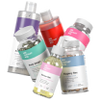Vaginal dryness is a common concern that can affect comfort, confidence, and overall well-being. Many people look for natural ways to support moisture and comfort as part of their wellness routine. One traditional option that’s been used for centuries is slippery elm — a soothing plant ingredient known for its natural hydration-supportive properties. Let’s explore what it is and how it fits into a gentle self-care approach.
Understanding Vaginal Dryness
Vaginal dryness occurs when there’s a decrease in natural moisture. It can cause feelings of discomfort, irritation, or tightness. Common contributing factors may include hormonal changes, postpartum recovery, certain medications, or lifestyle stressors. While this is a normal experience for many, persistent dryness should always be discussed with a healthcare provider.
What Is Slippery Elm?
Slippery elm comes from the inner bark of the Ulmus rubra tree and has a long history of traditional use in herbal wellness. It contains a natural compound called mucilage — a gel-like substance that becomes soothing and hydrating when mixed with water. This quality makes slippery elm a popular ingredient in products designed to support comfort and moisture.
How Slippery Elm Supports Comfort
When used appropriately, slippery elm may help:
- Soothe dryness or irritation: The natural mucilage forms a soft, moisturizing layer that supports comfort and relief.
- Promote a balanced feel: It can help maintain softness and hydration, especially when used regularly as part of a gentle wellness routine.
Different Ways to Include Slippery Elm
There are several ways to enjoy the natural benefits of slippery elm, depending on preference:
- Oral supplements: Many prefer easy-to-take capsules that work naturally from the inside out, like our Slippery Box Moisture Capsules.
- Topical products: Some wellness brands include slippery elm in creams or balms designed for external hydration support.
- Traditional teas or blends: Herbal enthusiasts sometimes use slippery elm as part of soothing beverages.
Tips for Safe and Mindful Use
- Consult your healthcare provider: Before adding any supplement or topical ingredient, especially if you’re pregnant, breastfeeding, or managing a condition.
- Follow product directions: Always adhere to labeled use and dosage recommendations.
- Check for sensitivity: As with any natural product, discontinue use if irritation or discomfort occurs.
Research and Considerations
While formal clinical studies on slippery elm for vaginal dryness are limited, its moisturizing and soothing qualities are well-recognized in traditional herbal use. As with any supplement, results may vary, and consistency is key for most people.
When to Seek Medical Advice
If vaginal dryness is persistent, painful, or affects your quality of life, it’s important to speak with a qualified healthcare provider. They can identify possible underlying causes and recommend the most suitable care plan for you.
Adding a natural supplement like slippery elm can be a simple, holistic way to support your self-care routine — but it’s most effective when paired with professional guidance and a balanced lifestyle.
Shop Slippery Box Moisture Capsules here!
Real Reviews, Real Customers
This article is for general wellness and informational purposes only. It is not intended to diagnose, treat, cure, or prevent any condition. Always follow product directions and consult a qualified healthcare professional for personalized medical advice.







